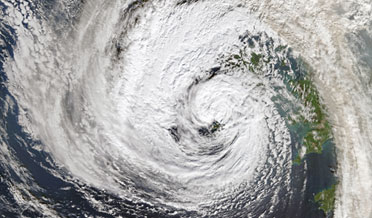Prepare Your AC for Hurricane Season
Preparing Your AC for Hurricane Season Tips for Homeowners
Over the past two decades, the ferocity of Gulf Coast hurricanes has had devastating results on coastal cities and hurricane planning is common at the municipal, utility, corporate, and business levels. Prudent homeowners are also making customized preparations for the next tropical storm or hurricane. R. M. Mullinix is offering several tips to help you make your home safer and put you on the road to recovery.
Prepare Your AC for Hurricane Season: General Home Preparation
- Will you shelter in place or evacuate? It probably depends upon the intensity of the storm. Explore the recommended evacuation route(s) should the time come. If you plan to evacuate, plan for your destination and methods of communicating your plans.
- Prepare an emergency survival kit that contains bottled water, food that needs little prep, and toilet paper for one week to Prepare Your AC for Hurricane Season.
- Trim trees of deadwood and limbs that are too close to the house to Prepare Your AC for Hurricane Season.
- Store supplies for shuttering windows and bracing doors against strong winds.
Whether you decide to ride out the storm or evacuate to safety, here are some tips for preparing your HVAC system for a hurricane or tropical storm and minimize damage during recovery.
Prepare Your AC for Hurricane Season: Before the Storm Event
- Prepare your compressor unit for the coming storm.
- If you live in a low-lying area, consider elevating the compressor unit—the AC component you find in your yard. Many municipal building codes now require new AC compressors and fuel-powered generators to be raised out of the potential for damage due to high water. Hurricane Harvey damaged an estimated 130,000 outside compressor units (estimated that over 130,000 outside AC compressor units were damaged in 2017). Anticipate damage from high water and protect your compressor unit?
- Strap your compressor unit down to prevent it from becoming a projectile! Straps are available at local home improvement stores and are inexpensive solutions to secure the unit in high winds. Also, purchase a tarp or customized covering for the compressor unit to keep debris from the hollow interior of the compressor.
- Cooldown before the storm.
Anticipate a power outage to happen during the storm and for a period afterward. Lower the thermostat on your HVAC system several degrees before the storm arrives. If you have not shuttered windows, keep them closed and doors shut tight. The goal is to make the home comfortable for as long as possible, since the power may be out for several days.
- Secure lawn and patio belongings.
Intense storms record sustained winds that approach 100 mph and gusts much higher. Patio furniture and lawn décor are potential projectiles and need to be secured or stored in a safe place. Clear leaves and limbs that are too close to the compressor unit—they might be blown inside. If you have window AC units, remove them and close the window tightly.
Last Minute Preparation
- Turn the AC off.
If you evacuate, turn off power at your service panel before you leave. If you shelter in place, consider taking the same precaution to protect your home’s electronics and appliances from damaging power surges from lightning and electrical shorts in the utility lines. Always turn the AC off after you cover the compressor unit since it requires a lot of air to pass over the cooling coils. Also, heavy rains often cause localized flash flooding. Water and electricity create extreme hazards from electric shock to people and pets that come in contact with the two together.
If you shelter in place, refrain from watching the storm. Stay away from windows and doors. Find an interior space and wait for the storm out. Trying to move during the storm is very hazardous and should only happen when a new threat requires you to seek further shelter.
Prepare Your AC for Hurricane Season: After the Storm
- Take it slow.
Once the storm has subsided it is tempting to turn the power back on to “see if everything works.” Before you take that step, take some time to make a visual inspection of the whole house. Remember to check for both wind and water damage, inside and out.
- Inspect for downed power lines. DO NOT GO NEAR A DOWNED POWER LINE. Call your electric utility company for repairs.
- Inspect your compressor unit. Remove the cover before you turn the AC system on. Check the hollow interior of the unit for leaves and debris that might have blown inside. Remove this debris while the power is off since the fan can start unexpectedly at any time after the unit has power.
- Inspect the electrical and coolant lines that run from the unit to the house for damage.
- Inspect the inside components for water damage. If there is any indication of high water, even if it has subsided, call your HVAC technician before you turn the AC on. If something does not look right, call a technician before you restore power to the AC.
- For insurance purposes, take lots of photos of storm damage.
- Schedule an AC Tune-Up ASAP
Your system may look fine and function properly, but after a hurricane, we recommend a service call to get a professional opinion. We can catch a minor problem before it becomes a major problem. Anticipate a high volume of calls, so schedule an appointment and be patient.
Want more info on how to Prepare Your AC for Hurricane Season?
For more information about R.M. Mullinix or how to Prepare Your AC for Hurricane Season, schedule an appointment, or visit our HVAC installation information page.

